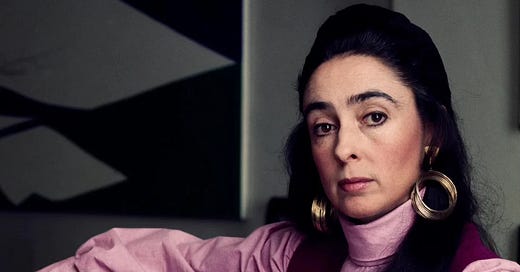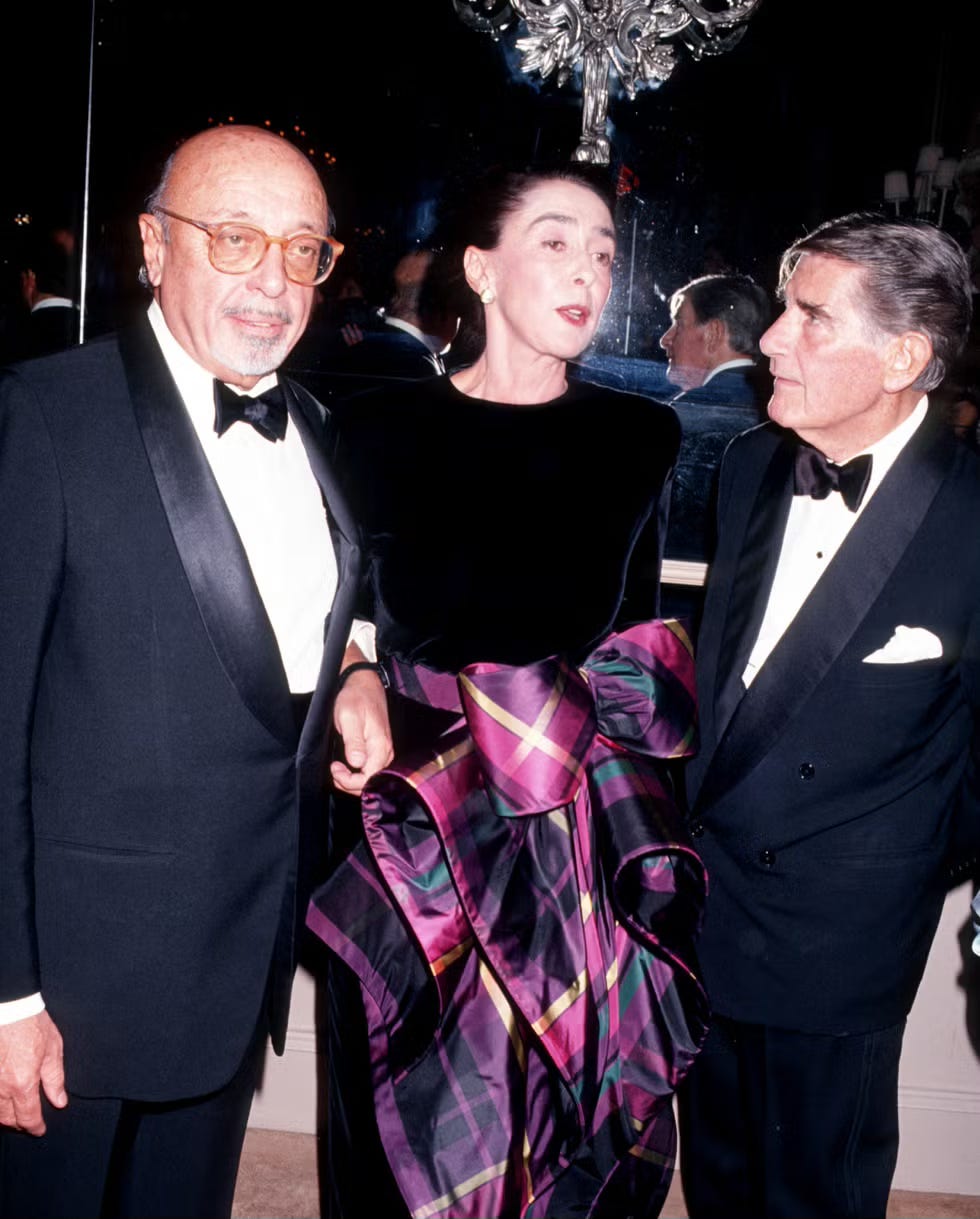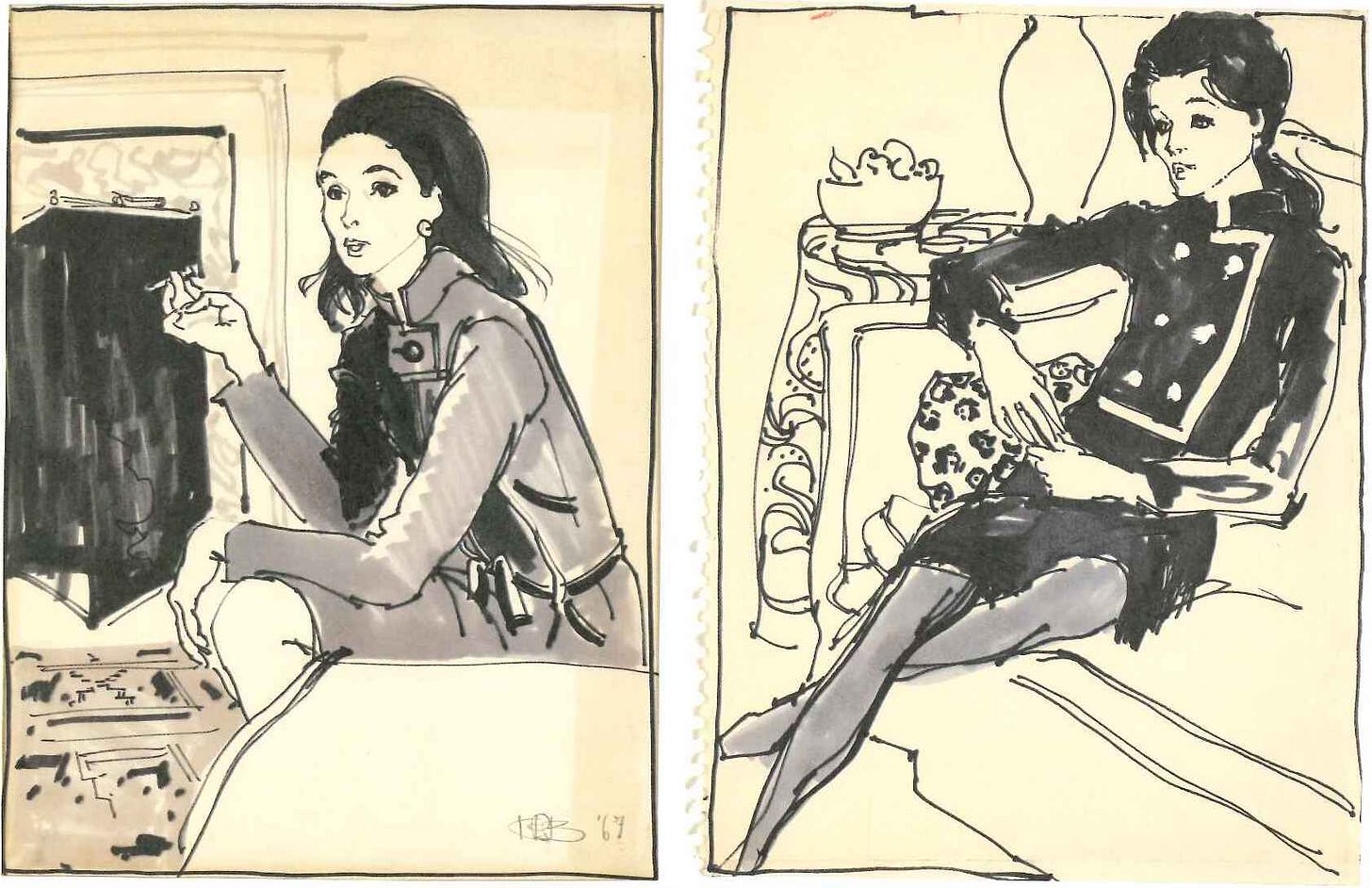“If you have taste, you can always put something together”
— Mica Ertegun
Mica Ertegun was a Romanian-American interior designer and philanthropist who lived a life that spanned 10 decades. Known for her elegance in taste and expansive contributions to the arts, Mica founded the interior design firm MAC II with her friend Chessy Rayner. Throughout her long life she was able to impact on the most diverse corners of life.
Table of Contents: Early Life / Life after WWII / Meeting Ahmet / Founding MAC II / Philanthropy / Later Years
If you aren’t subscribed yet, hit the subscribe button below to receive the Adorable Stories every weekend, directly in your inbox:
Early Life
“We had a beautiful house in Romania”
— Mica Ertegun
Mica grew up in a cultured household in Bucharest. She was born Ioana Maria Banu on October 21st, 1926, the only child of Natalia Gologan and Gheorghe Banu, a Romanian physician. Her upbringing exposed her to the arts and international society from an early age.
Her father Gheorghe was first a prominent minister in King Carol II’s cabinet and then a close supporter of King Michael I during World War II (when Romania had a troubled alliance with Hitler’s Germany).
During World War II, Mica (as her German nanny used to call her after hearing her father call her “mic,” Romanian for “the little one”) was sent to the family countryside estate in the attempt to avoid the Allies air raids, which were particularly intense over the Romanian capital.
In 1942, when she was 16, Mica married Stefan Grecianu, the aristocratic son of a land-owning family, who was 15 years her senior and whose mother was a lady-in-waiting to Queen Marie of Romania.
Life after WWII
Eleven days after the end of WWII, King Michael I was forced to abdicate his throne and in 1948 a new Communist Regime was instated in the country: the Romanian communist regime operated under significant influence from the Soviet Union, particularly in its early years after World War II, when Soviet advisors sent by Stalin played a dominant role in shaping Romania’s political, economic, and military policies for decades to come.
As frequently happened under the Stalinist regimes, members of the the intellighenzia were targeted first by the newly instated communist authorities in order to prevent the rise of any possible (cultural or political) opposition at home.
Gheorghe Banu was immediately imprisoned by the newly formed, infamous Securitate (the Communist Secret Police, one of the most notorious and oppressive intelligence agencies in the Eastern Bloc).
As soon as she discovered that her father had been arrested, Mica — together with her husband Stefan Grecianu — rushed out of Romania by train and flew to Zurich, Switzerland on a refugee passport.
“[The authorities] told us we could take everything. When we got on the train, they took everything. But I was so happy to be out.”
— Mica Ertegun
The couple was stripped of everything they had with them: they escaped Romania completely penniless and lived for a year in Switzerland at the majestic Dolder Grand Hotel, overlooking the Swiss Alps, supported by friends.
After Switzerland, Mica and Stefan relocated for a few months to Paris, where Mica worked as a model.
Later in the early 50s, some wealthy Canadian friends lent them money to allow them to move to Canada.
Mica and Stefan eventually settled on a farm on the shore of Lake Ontario: for almost 10 years, Mica’s job was to collect, wash and box the eggs of 5,000 chickens.
“We had to create a world. It was tough, but it was the best time of my life. When you are young, anything can be great.”
— Mica Ertegun recalling her time in Canada
Meeting Ahmet
In the fall of 1958, Mica travelled to New York City to meet a Turkish diplomat who had met her father in prison in Bucharest and she thought might help free him.
Her attempt proved unfortunately unsuccessful (her father would later die in prison in an uncertain date), but during a dinner at the Bon Soir — a small cabaret in Greenwich Village — she met Ahmet Ertegun, then 35, the son of Münir Ertegun, Turkey’s former ambassador to Washington during the FDR administration, between 1934 and 1944.
A notorious playboy, recently divorced, Ahmet — thanks to a USD 10,000 loan from his Turkish dentist — had founded Atlantic Records with Herb Abramson in 1947, which would later become one of the most influential record labels in the history of popular music.
Mica was flattered by Ahmet, who immediately pursued her up to Canada: during a stay at the Ritz Carlton in Montreal, Ahmet hid a five-piece band in his closet as a surprise for Mica.
She later obtained a divorce from her husband Stefan Grecianu, and in 1961 Mica and Ahmet were married in Manhattan.
Founding MAC II
In 1967, Mica and her friend Chessy Rayner (extensively featured in the Adorable Story #75) founded the interior design firm MAC II (the initials stood for “Mica And Chessy”) and started curating the interior design of stunning apartments and grand homes across North and South America, Europe and the Middle East.
Mica and Ahmet divided their time between palatial homes in Manhattan, Southampton, Paris and Bodrum, Turkey.
The Erteguns bought a 78-foot Turkish yacht for cruising the Mediterranean with their friends. For years, they gave millions to charities, threw lavish parties and appeared regularly in gossip columns and society pages.
Ahmet Ertegun, meanwhile, worked with megastars like Aretha Franklin, Ray Charles, Bobby Darin, Led Zeppelin and the Rolling Stones: by 1971, he was the greatest Rock-and-Roll mogul in the world.
A celebrity-studded Ertegun dinner party might have included Jacqueline Onassis, Joan Didion, Kid Rock, Andy Warhol, Mick Jagger and Henry Kissinger.
While Ahmet Ertegun was busy turning the small Atlantic Records into a global music powerhouse, Mica (who admittedly never shared her husband’s passion for rock and soul music, nor his enthusiasm for nightclubs), threw herself into the business of interior designs for MAC II.
In their interiors, often described as “austere” and “exotic” (or “simple and elegant”), furnishings were surrounded by a series of modern or Impressionist artworks.
Over the next three decades, their designs were featured in Architectural Digest, House Beautiful, Elle Decor, House & Garden and other magazines, and were often favorably reviewed in The New York Times and other news outlets.
In 1969, Mica and Chessy were hired by Saks Fifth Avenue to redecorate the flagship store’s entire fifth floor. They created a “Street of Shops,” with boutiques featuring Adolfo, Donald Brooks, Geoffrey Beene and Oscar de la Renta; a salon for the Bill Blass couture collection; and a “Park Avenue Room” for the creations of Giorgio di Sant’Angelo and Pierre Cardin.
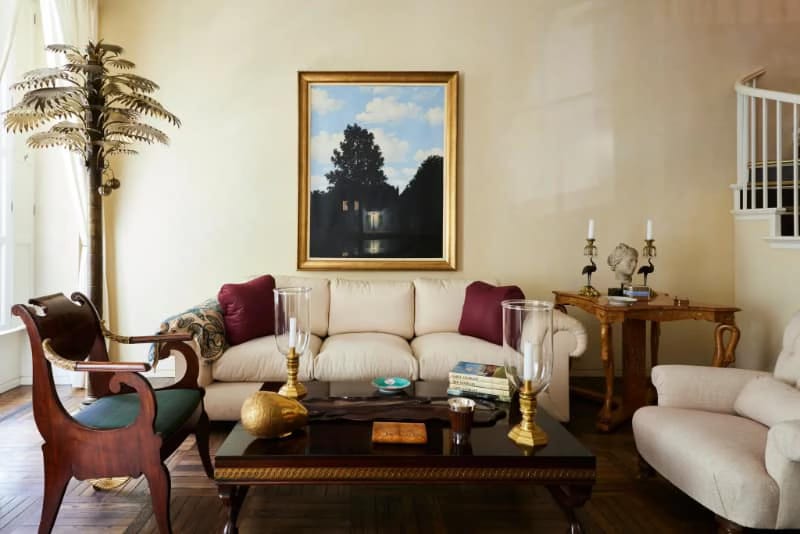
Mica designed the interiors of her own townhouse on the Upper East Side of Manhattan — where she pulled down the walls of three rooms to create a dramatic entertaining space filled with modern art and Russian, French and German antique furnishings — and for her 10-bedroom villa in Bodrum, Turkey overlooking the Aegean Sea.
“That the home, and its mix of local marble, stone and wood and colorful Turkish textiles, feels as fresh decades after the renovation is a testament to the taste and talent of the Romanian-born Mrs. Ertegun”
— The New York Times
By the 1980s, MAC II was flourishing, with projects for the artist Kenneth Noland, the television producer Douglas Cramer, the former Citigroup chief executive Sanford Weill and Keith Richards of the Rolling Stones.
New York penthouses, residential properties in Paris and Tel Aviv, and homes with ocean views were particular specialties of the MAC II design team.
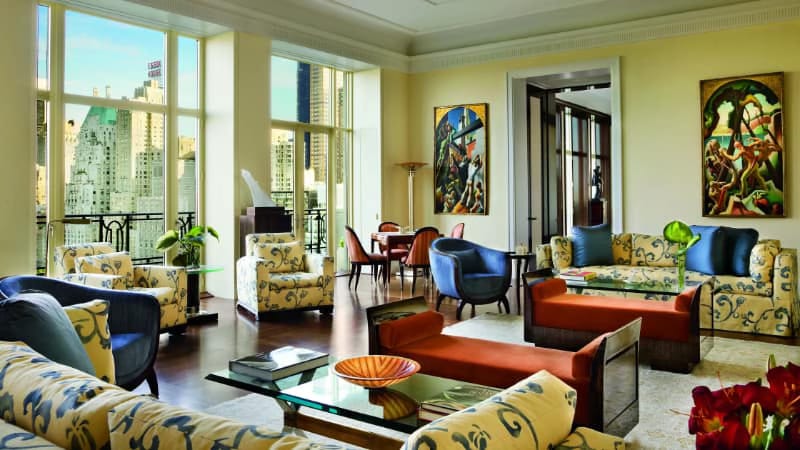
Their partnership ended with Chessy’s death in 1998 due to lung cancer, but Mica continued her own design work well into her 90s, decorating a Park Avenue duplex for the Walmart heiress Alice Walton, an oceanfront mansion in Southampton for the financier Leon Black (best known as the co-founder of the private equity firm Apollo Global Management), and two more projects in Israel.
Philanthropy
“For Ahmet and for me, one of the great joys of life has been the study of history, music, languages, literature, art and archaeology. I believe it is tremendously important to support those things that endure across time and make the world a more humane place.”
— Mica Ertegun
Ahmet Ertegun died in 2006 of injuries after an accidental fall backstage at a Rolling Stones concert given for the 60th birthday of President Bill Clinton, in Manhattan. He was 83 years old at the time.
After this death, Mica continued the couple’s expansive philanthropies.
In 2015, her USD 9 million gift created an atrium for Jazz at Lincoln Center.
In 2017, her USD 1.4 million pledge helped restore a substructure under the fourth-century Church of the Holy Sepulcher in Jerusalem. In recognition of that gift, she was named grand commander of the Holy Sepulcher by the patriarch of Jerusalem.
Her USD 41 million gift for humanities scholarships at the University of Oxford in 2012 was the largest of its kind in Oxford’s 900 years of history. In 2017, in recognition of her services to philanthropy, education and British-American cultural relations, Queen Elizabeth II appointed her honorary commander of the Order of the British Empire (OBE).
Later Years
“Retire? And do what? Buy diamonds? I like to work… it’s not so tragic”
— Mica Ertegun
Admittedly, she never retired from work, whether it be curating the interiors of clients around the world, or focusing on philanthropy projects dear to her heart.
Mica Ertegun died on December 2nd, 2023, at her home in Southampton, N.Y.
She was 97 years old.
—Alberto @
Do you know anyone who would love to read this Adorable Story? Show your support by sharing Adorable Times’ Newsletter and earn rewards for your referrals.


